
Products
DJI M30 Series vs M300 RTK vs Mavic 2 Enterprise Advanced
This comparison covers flight time, IP rating, safety, controllers, and design to help you choose the best enterprise drone.
In-depth comparison between the DJI M30 Series, M300 RTK and the Mavic 2 Enterprise Advanced;
M30 is a hybrid of the M300 RTK and M2EA: Combining M300 RTK's performance with the M2EA's portability;
M30 is DJI's most weatherproof drone to date with an IP55 rating. The M300 RTK has an IP45 rating. The M2EA does not have one;
M300 RTK is still DJI's most versatile platform, and has the edge over the M30 and M2EA for high-precision aerial surveying and LiDAR;
Use the new flagship RC Plus controller with the M30. Compatibility with the M300 RTK will come later;
M30 and M300 RTK can be used with the new FlightHub 2 flight and fleet management platform;
DJI Dock brings a drone in a box solution with the M30.
"It looks like the M300 RTK and the Mavic 2 Enterprise Advanced had a baby." This was the way Toby Knisely, Content Manager for DJI Enterprise, described the M30 Series at its official unveiling.
It is a fitting analogy. Indeed, DJI's latest enterprise solution is an innovative blend of the two: Combining flagship level specs and performance (akin to the M300) in a more lightweight and transportable airframe (similar to the M2EA).

With this in mind, how does the M30 Series compare to the M300 RTK and Mavic 2 Enterprise Advanced?
Find out in our in-depth comparison blog. Or, click here to view a camera comparison between the M300-H20T and M30T, with side-by-side datasets.
M30 Series vs M300 RTK vs Mavic 2 Enterprise Advanced: Key Specifications
This table provides a quick at-a-glance overview of the key specifications for the M30, M300 RTK and Mavic 2 Enterprise Advanced (M2EA).
M30 Series | M300 RTK | M2EA | |
Dimensions (mm): L x W x H | Unfolded (propellers excluded): 470 x 585 x 215 Folded: 365 x 215 x 195 | Unfolded (propellers excluded): 810 x 670 x 430 Folded: 430 x 420 x 430 | Unfolded: 322 x 242 x 84 Folded: 214x 91 x 84 |
Weight | 3.7 kg (including two batteries) | Approx. 6.3 kg (with two TB60 batteries, and single downward gimbal) | 909 g (without accessories) |
Max Takeoff Weight | 4 kg | 9 kg | 1.1 kg |
Flight Time | 41 minutes | 55 minutes (no payload); With payload: Depends on payload | Up to 31 minutes |
IP Rating | IP55 | IP45 | None |
Payloads | Fixed, multi-sensor payload; Third-party payloads can also be used | Interchangeable payloads, including third-party payloads | Fixed, dual sensor payload; Additional modules can be added |
Operating Temperature | -20°C to 50°C | -20°C to 50°C | -10°C to 40°C |
Max Speed | 23 m/s | S mode: 23 m/s P mode: 17 m/s | S mode: 20 m/s P mode: 13.8 m/s |
Max Wind Speed Resistance | 15 m/s; 12 m/s during taking off and landing | 15 m/s; 12 m/s when taking off or landing) | 10 m/s |
RTK Positioning Accuracy | When RTK enabled and fixed: Enabled 1 cm+1 ppm (horizontal) 1.5 cm+1 ppm (vertical) | When RTK enabled and fixed: 1 cm+1 ppm (Horizontal) 1.5 cm + 1 ppm (Vertical) | In RTK FIX: 1cm+1ppm (Horizontal) 1.5cm+1 ppm (Vertical) *RTK Module available separately |
Controller | DJI RC Plus; IP54 rated | DJI Smart Controller Enterprise; No IP Rating *RC Plus compatibility is expected soon | DJI Smart Controller; No IP Rating |
Maximum Transmission Distance (CE) | 8 km | 8 km | 6 km |
DJI M30 Series vs M300 RTK vs Mavic 2 Enterprise Advanced: Design
As these images show, the M30 is very much a hybrid of these other two solutions: More closely aligned to the M300 RTK, but taking some inspiration from the Mavic 2 Enterprise Advanced.
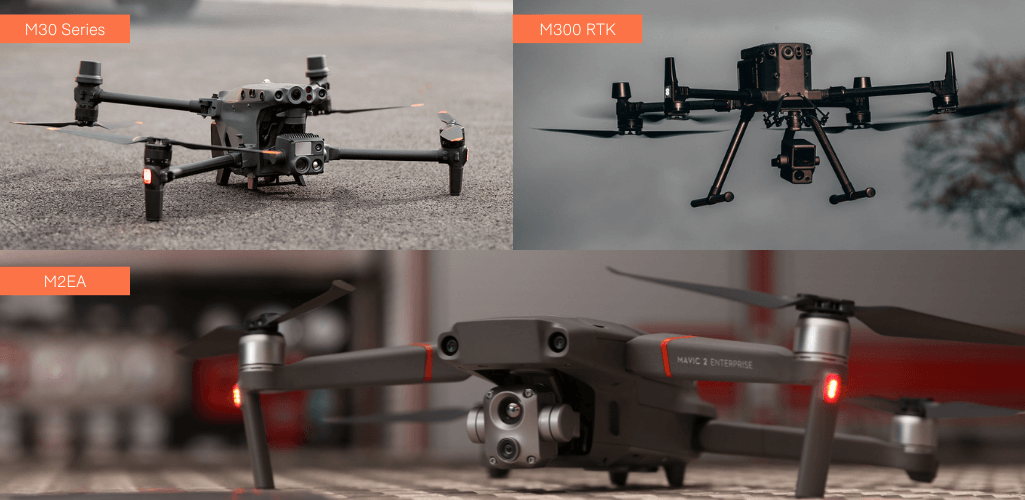
In appearance, the M30 has a similar body to the M300 RTK and even uses the M300 RTK's H20 payload series as its inspiration for its integrated camera - albeit the payload is smaller (but no less powerful) on the M30.
Crucially, though, the M30 is significantly lighter and smaller than the M300 RTK. Small enough to fit into a backpack - something not possible with the M300 RTK - the M30 is the perfect balance of portability and power.

On top of this, the M30’s foldable arms have a quick-lock mechanism to minimise setup time - and an onboard computer only allows take-off when the arms, and payloads, are locked in place.

And, unlike the M300, there is no landing gear, further boosting rapid deployment.
But when it comes to size, portability and deployment speed, the Mavic 2 Enterprise Advanced is the standout: With a maximum takeoff weight of 1.1kg, it is substantially lighter (and smaller) than the other two drones. And as we'll see later, it is a decent performer.
At the other side of the scale, the M300 RTK is a far more substantial aircraft. It can still be deployed in less than two minutes, but it lacks the highly-portable nature of the other two.
That said, its size enables it to carry a substantial amount of weight - with a maximum take-off weight of 9kg - and can integrate up to three payloads at a time.

Payloads will be discussed in more detail later in the article, but in terms of their design, the M30 Series, M300 RTK and Mavic 2 Enterprise Advanced have different configurations.
The M30 Series has a fixed, multi-sensor camera. It can also carry a third-party payload via its top port.
It is a similar story with the Mavic 2 Enterprise Advanced: With a fixed dual-sensor camera, as well as the ability to fly with an extra accessory on top - such as a speaker, spotlight, beacon or RTK Module (pictured below).

In contrast, the M300 RTK has no fixed payload: Rather, it can be integrated with a vast library of cameras and sensors - including LiDAR and photogrammetry - as well as other accessories, such as spotlights and loudspeakers.
As mentioned previously, the M300 RTK can carry up to three payloads at once, utilising these configurations: Single downward gimbal; Dual downward gimbals; Single upward gimbal; Upward and downward gimbals; Triple gimbals.�
M30 Series vs M300 RTK vs Mavic 2 Enterprise Advanced: How Waterproof?
A weather-proof drone can be an essential requirement for operators, especially for public safety personnel who can't be restrained by the weather when an emergency calls.
The M30 delivers by becoming DJI's most weatherproof aircraft to date - boasting an impressive IP55 rating.

IP ratings are represented by two-digit numbers that define the degree of protection against solids (first digit) and liquids (second digit).
Therefore, an IP55 rating means that the M30 is protected against dust (limited ingress of dust permitted, not harmful) and against low pressure jets of water from any angle.
While this is not a complete waterproofing, it does mean that the drone can operate in wet-weather environments.
To complement this, the M30's RC Plus is DJI's first weatherproof remote controller, with an IP54 rating. We'll discuss this in more detail later in the blog.

In comparison, the M300 RTK has an IP45 rating - giving it the same performance specs during wet weather, but its strength against solids is slightly less, making it protected against a solid object greater than 1mm, such as screws and wires.

The Mavic 2 Enterprise Advanced has no IP rating, meaning it is not advisable to fly in wet weather. In truth, the lack of IP rating is a big limitation of the Mavic 2 Enterprise Advanced.
Both the M30 Series and M300 RTK are also more rugged in their ability to handle extreme temperatures and wind speeds, compared to the Mavic 2 Enterprise Advanced - as the table shows below.
M30 Series | M300 RTK | M2EA | |
Operating Temperature | -20°C to 50°C | -20°C to 50°C | -10°C to 40°C |
Wind Speed Resistance | 15 m/s; 12 m/s during taking off and landing | 15 m/s; 12 m/s during taking off and landing | 10 m/s |
IP Rating (Drone) | IP55 | IP45 | None |
IP Rating (RC) | RC Plus: IP54 | Smart Controller Enterprise: None. *Future RC Plus compatibility is expected | Smart Controller: None |
Cameras And Payloads
All three drones have powerful cameras, but offer different levels of versatility.
The Mavic 2 Enterprise Advanced sets the bar high for a small, compact drone. Its dual sensor array comes with a 48 MP visual camera, with 32x digital zoom, and impressive 640 x 512 @ 30Hz thermal sensor, with 16x digital zoom.
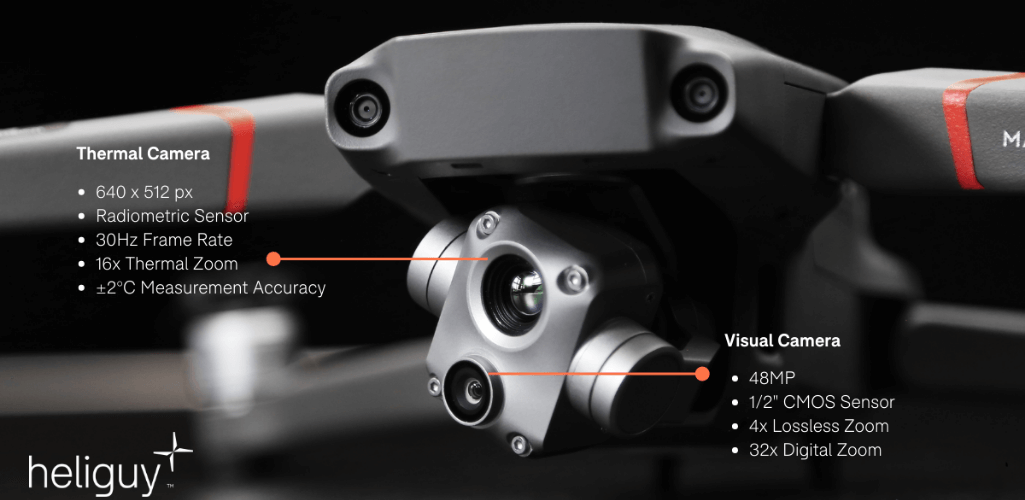
It's impressive stuff. However, the Mavic 2 Enterprise Advanced's dual camera is fixed and cannot be swapped with an alternative sensor.
For added versatility, the drone can be integrated with a spotlight, speaker or flight safety beacon, as well as an RTK module (available separately, and pictured below) for centimetre positioning.

Like the Mavic 2 Enterprise Advanced, the M30 Series has a fixed camera set up, but these integrated payloads are packed with extra features and additional capabilities: The M30 comes with a wide angle, zoom and laser rangefinder, while the M30T features all of this, plus a thermal sensor.

Highlights include a 48 MP zoom camera (including 200x hybrid zoom) and a 12 MP wide camera - both able to shoot 4K 30fps video - while the thermal sensor has the same key specs as the Mavic 2 Enterprise Advanced, including that 640 x 512 resolution.
In fact, the payloads on the M30/M30T take inspiration from the extremely powerful and interchangeable H20/H20T payloads for the M300 RTK, as these side by side images show...

...but with some impressive upgrades.
This includes an improved FPV camera that offers enhanced details in low light conditions, that allows pilots to pick out the horizon during night flights.
The differences between these sensors - and their powerful capabilities - are shown below:
M30 | H20 | M30T | H20T | |
Wide Angle | Equivalent Focal Length: 24 mm, DFOV: 84°; 12 MP 1/2'' CMOS Sensor; Video Resolution: 4K/30fps | Equivalent Focal Length: 24mm, DFOV: 82.9°; 12 MP 1/2.3” CMOS Sensor; Video Resolution:1080@30fps | Equivalent Focal Length: 24 mm, DFOV: 84°; 12 MP 1/2'' CMOS Sensor; Video Resolution: 4K/30fps | Equivalent Focal Length: 24mm, DFOV: 82.9°; 12 MP 1/2.3” CMOS Sensor; Video Resolution:1080@30fps |
Zoom | 48 MP 1/2'' CMOS Sensor; 5x-16x Optical Zoom, 200x Max. Hybrid Zoom; Video Resolution: 4K/30fps | 20 MP 1/1.7” CMOS Sensor; 23× Hybrid Optical Zoom, 200x Max Zoom; Video Resolution: 4K/30fps | 48 MP 1/2'' CMOS Sensor; 5x-16x Optical Zoom, 200x Max. Hybrid Zoom; Video Resolution: 4K/30fps | 20 MP 1/1.7” CMOS Sensor; 23× Hybrid Optical Zoom, 200x Max Zoom; Video Resolution: 4K/30fps |
Laser Rangefinder | Range: 3 m - 1200 m; Accuracy: ±(0.2m+D×0.15%) | Range: 3 m - 1200 m; Accuracy: ± (0.2 m + D×0.15%) | Range: 3 m - 1200 m; Accuracy: ±(0.2m+D×0.15%) | Range: 3 m - 1200 m; Accuracy: ± (0.2 m + D×0.15%) |
Thermal | N/A | N/A | Resolution: 640×512; Frame Rate: 30fps | Resolution: 640×512; Frame Rate: 30fps |
As the table above shows, the M30T's sensor is similar to the H20T - but is actually more than half the weight, coming in at 320g (less than a can of pop) compared to 828g.
However, the M300 RTK is a far more versatile drone than the M30 Series.
It is true that the M30 Series has full PSDK integration and will support a growing library of third-party payloads, including spotlights, loudspeakers, edge computing, parachutes, gas detectors, and more. They attach to the drone via the top payload port. However, it is early days and there are not many of these solutions on the market, yet.
But the M300 RTK is a true Swiss Army knife, able to integrate a huge swathe of payloads, and carry up to three at once.
The graphic below provides a flavour of the M300 RTK's versatility, compatible with a diverse range of payloads for a vast array of missions.
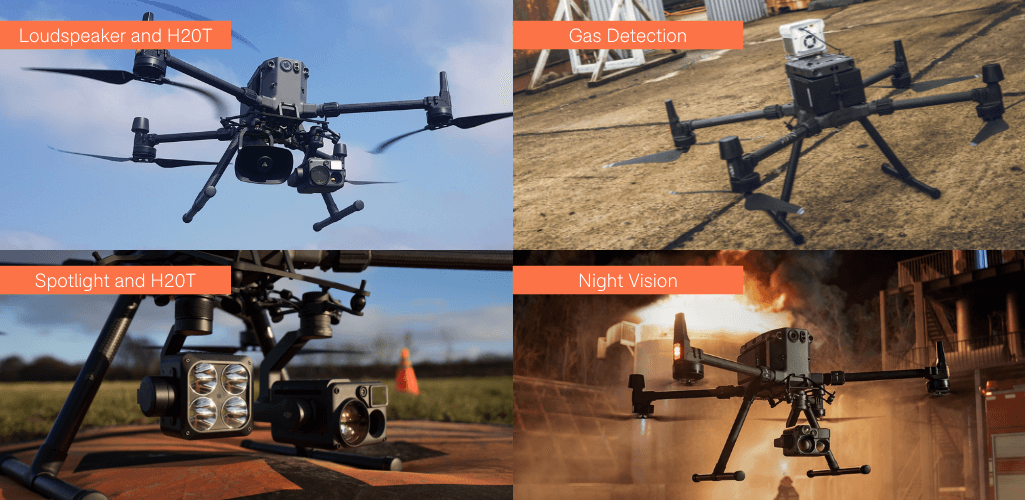
And the recent release of the H20N night vision camera shows that DJI is still very committed to the M300 RTK.
The M300 RTK can also carry a range of surveying payloads, such as the DJI Zernmuse P1 photogrammetry camera and L1 LiDAR sensor...

...as well as third-party mapping payloads, like the GeoSLAM ZEB Horizon.
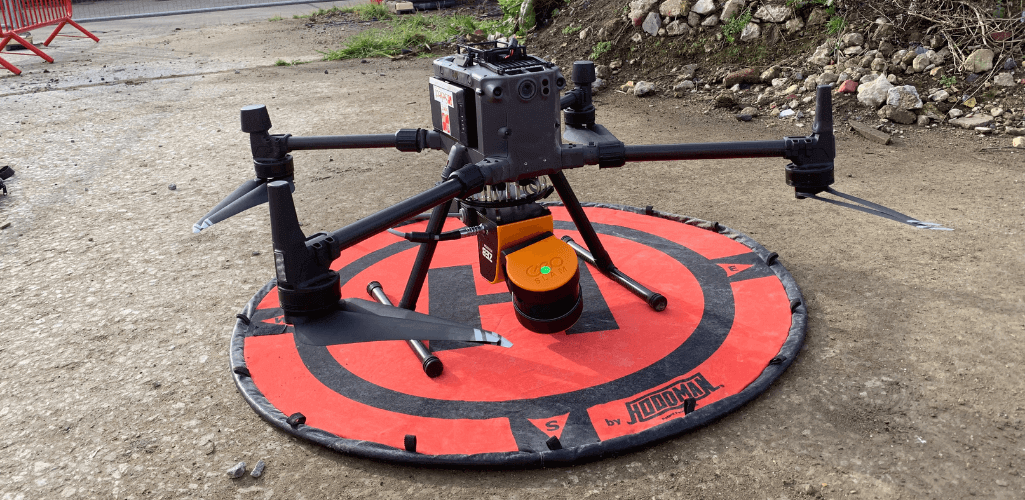
This makes the M300 RTK a highly-powerful surveying solution.
M30 Series vs M300 RTK vs Mavic 2 Enterprise Advanced: Controller And Transmission Distance
The M30, M300 RTK and Mavic 2 Enterprise Advanced utilise different controllers, each with their own capabilities.
The new flagship RC Plus is designed for the M30, although it is expected to be made compatible with the M300 RTK at a later date.

For the time being, M300 RTK operators will continue to use the Smart Controller Enterprise, while the DJI Smart Controller is the device for the Mavic 2 Enterprise Advanced. DJI has not said anything about the Mavic 2 Series being made compatible with the RC Plus.

With the RC Plus being DJI's latest enterprise controller, it does have some distinct advantages over the other two: It has a larger and brighter screen, has longer runtime - thanks to the ability to hot-swap batteries or be charged during use via its top 65W USB-C port - and has an IP54 weather-proofing - making it DJI's first weatherproof remote controller.

The RC plus also has additional physical buttons that give easy access to key functionality - without having to tap on a screen or let go of the sticks.
Meanwhile its quad-antenna design ensures long-range stable connection, as well as two features which further optimise connectivity:
Remove the top two antennas. This gives teams the ability to attach their own solutions to enable greater range and video feed clarity when interference is disruptive.
The second is the option to add a DJI Cellular Module, which is a 4G dongle that gives you connectivity, even in remote regions or complex environments with signal interference. Please note that 4G availability varies depending on country and region.
For the record, the RC Plus enables a transmission distance of 8km using O3 Enterprise. The Smart Controller Enterprise for the M300 RTK allows the same distance, with OcuSync Enterprise, while the Smart Controller has a maximum transmission distance of 6km, via OcuSync 2.0. Please note, these distances are based on operational limits within CE regions.
RC Plus | Smart Controller Enterprise | Smart Controller | |
Screen Size | 7.02 inch | 5.5 inch | 5.5 inch |
Brightness | 1200 cm/m² | 1000 cd/m² | 1000cd/m2 |
IP Rated | Yes. IP54 | No | No |
Battery Life | Internal battery: Approx 3 hours 18 mins; Internal battery + external battery: Approx 6 hours | Built-in battery: Approx. 2.5 hours; Built-in battery + external battery: Approx. 4.5 hours | 2.5 hours |
Hot-swappable Battery | Yes | Yes | No |
Operating Temperature | -20°C to 50°C | -20°C to 40°C | -20°C to 40°C |
Transmission Distance (CE) | 8km | 8km | 6km |
OcuSync Version | O3 Enterprise | OcuSync Enterprise | OcuSync 2.0 |
Removable Antennas | Yes | No | No |
4G Dongle Compatibility | Yes. DJI Cellular Module | Yes: ZTE MF833V dongle | Not recommended by DJI |
M30 Series vs M300 RTK vs Mavic 2 Enterprise Advanced: Flight Time
All three drones are powerful performers, but the M30 and M300 RTK have the edge over the Mavic 2 Enterprise Advanced when it comes to flight time.

The table below provides a summary of the flight times for each drone. Please note that, in the case of the M300 RTK, the table is not a definitive list, as the drone can be used with a wealth of payloads.
Equally, third-party payloads can be used with the M30 Series, but more details of these will be available soon. These will no doubt reduce the drone's flight time.
M30 Series | M300 RTK | M2EA |
Max Flight Time: 41 minutes | No payload: 55 min Z30: 46 min XT2: 45 min H20: 45 min P1: Up to 44 min H20T: 43 min L1: Up to 42 min Z30 + XT2: 39 min H20 + XT2: 39 min Max Load: 31 min | Max Flight Time: 31 min RTK module attached: 28 min Beacon turned on: 29 min Beacon turned off: 30 min Spotlight turned on: 24 min Spotlight turned off: 28 min Speaker turned on: 27 min Speaker turned off: 28 min |
M30 Series vs M300 RTK vs Mavic 2 Enterprise Advanced: Batteries
The longer flight time of the M30 and M300 RTK is due to a number of factors, including their batteries.
As the table below shows, the M30 and M300 RTK use higher capacity batteries.
M30 Series | M300 RTK | M2EA | |
Name | TB30 | TB60 | Mavic 2 Intelligent Flight Battery |
Battery Type | LiPo 6S | LiPo 12S | LiPo |
Capacity | 5880 mAh | 5935 mAh | 3850 mAh |
Voltage | 26.1 V | 52.8 V | 15.4V |
Energy | 131.6 Wh | 274 Wh | 59.29 Wh |
Net Weight | 685 g (approx) | 1.35 kg (approx) | 297 g |
The M30 Series and M300 RTK also benefit from high-performance, fast-charging battery stations.
The M30's BS30 charging case - which is IP55-rated (with the cover closed properly) - allows two TB30 batteries to be charged from 20% to 90% in 30 minutes, or fully-charged in 50 minutes.
In fact, the BS30 case - which has capacity for eight M30 TB30 batteries and two WB37 remote controller batteries - has three charging modes:
Standard Mode: Charges each pair of batteries to 100%, one pair at a time.
Ready-to-Fly Mode: Fast charges each pair to 90%, with each pair taking less than 30 minutes, and then keeps them at 90% on standby. This is ideal for first responders and emergency teams who need their drones and batteries ready to go, at a moment’s notice.
Storage Mode: Charges each pair to 50%. This is ideal for the battery’s health if you don’t have any work scheduled with the M30 in the near future.
The M300 RTK's BS60 Intelligent Battery Station also enables rapid charging time for TB60 batteries:
220V input: 60 minutes (fully charging two TB60 batteries), 30 minutes (charging two TB60 batteries from 20% to 90%).
110V input: 70 minutes (fully charging two TB60 batteries), 40 minutes (charging two TB60 batteries from 20% to 90%).
The BS60 Battery Station can simultaneously store eight TB60 Intelligent Flight Batteries and four WB37 Intelligent Batteries. It can charge two TB60 Intelligent Flight Batteries and one WB37 Intelligent Battery at the same time.
In contrast, it can take up to 90 minutes to charge the batteries for the Mavic 2 Enterprise Advanced.
To further reduce downtime, the M30 and M300 RTK have hot-swappable batteries.

The batteries for the M30 Series, M300 RTK and Mavic 2 Enterprise Advanced all have self-heating capability for operation in cold environments.
M30 Series vs M300 RTK vs Mavic 2 Enterprise Advanced: Flight Performance
The M30 Series and M300 RTK also have the edge in other performance areas, such as speed and maximum operational ceiling.
The table below highlights the key differences between the three drones.
M30 | M300 RTK | M2EA | |
Speed | 51.4 mph / 23 m/s | 51.4 mph / 23 m/s (S mode); 38 mph / 17 m/s (P-mode) | 44.7 mph / 20 m/s (S-mode); 30.8 mph / 13.8 m/s (P-mode) |
Max Ascent Speed | 6 m/s | S mode: 6 m/s; P mode: 5 m/s | 6 m/s (S-mode); 5 m/s (P-mode); 4 m/s (S-mode with accessories); 4 m/s (P-mode with accessories) |
Max Descent Speed | Vertical: 5 m/s Tilt: 7 m/s | Vertical: S mode: 5 m/s; P mode: 4 m/s. Tilt: S Mode: 7 m/s | Vertical: 5 m/s (S-mode); 4 m/s (P-mode). Tilt: 7 m/s (S-mode); 4 m/s (P-mode) |
Max Service Ceiling Above Sea Level | 5,000 m (with 1671 propellers); 7,000 m (with 1676 propellers) | 5,000 m (with 2110 propellers, takeoff weight ≤ 7 kg); 7,000 m (with 2195 propellers, takeoff weight ≤ 7 kg) | 6,000 m |
Max Tilt/Pitch Angle | 35° (N-mode and Forward Vision System enabled: 25°) | 30° (P-mode, Forward Vision System enabled: 25°) | 35°(S-mode, with remote controller); 25°(P-mode) |
Max Angular Velocity | Pitch: 150°/sec.; Yaw: 100°/sec. | Pitch: 300°/s, Yaw: 100°/s | 200°/s (S-mode) 100°/s (P-mode) |
M30 Series vs M300 RTK vs Mavic 2 Enterprise Advanced: Safety Features
DJI is renowned for its flight safety and the M30 Series, M300 RTK and Mavic 2 Enterprise Advanced duly deliver.
For its size, the Mavic 2 Enterprise Advanced packs some decent safety features, such as omnidirectional object sensing and DJI AirSense (ABS-B tech) which provides timely warnings of any incoming crewed aircraft nearby.
However, the M30 and M300 RTK take flight safety to another level, featuring AirSense, built-in redundancies and backup systems, three-propeller emergency landing, a Health Management System, and six-way obstacle avoidance sensors with enhanced detection ranges.
The M30 Series and M300 RTK also benefit from enhanced flight displays on the remote controllers, integrating flight, navigation, and obstacle information to empower the pilot with exceptional situational awareness.
Additionally, the M300 RTK has Advanced Dual Control, which allows either operator to take control of the aircraft (or payload). This creates new possibilities for mission strategies, provides higher flexibility during operations, and improves safety.
M30 Series vs M300 RTK vs Mavic 2 Enterprise Advanced: Data Security
As well as flight safety, data integrity is key.
The Mavic 2 Enterprise Advanced has a password protection feature to keep sensitive data safe. It also has Local Data Mode (with DJI Pilot app), which stops the DJI App from sending or receiving any data over the internet, and the radio link between the aircraft and remote controller features robust AES-256 encryption.
In comparison, the M30 offers best-in-class data security protocols built on DJI’s security-first Matrice 300 V3 firmware. This includes:
Offline Updates: Enables future firmware updates to be completed entirely offline.
Local Data Mode: Completely disconnects the drone from the internet, ensuring all data stays only in the drone.
SD Card AES Encryption: Protects all the photos, videos, and flight logs that get stored on the microSD card by a security code and AES encryption.
M30 Series vs M300 RTK vs Mavic 2 Enterprise Advanced: FlightHub 2
Both the M30 Series and M300 RTK (supported Payloads: Zenmuse H20, Zenmuse H20T, and Zenmuse H20N) are compatible with the all-new FlightHub 2: DJI’s complete ground-to-cloud drone operations management software.
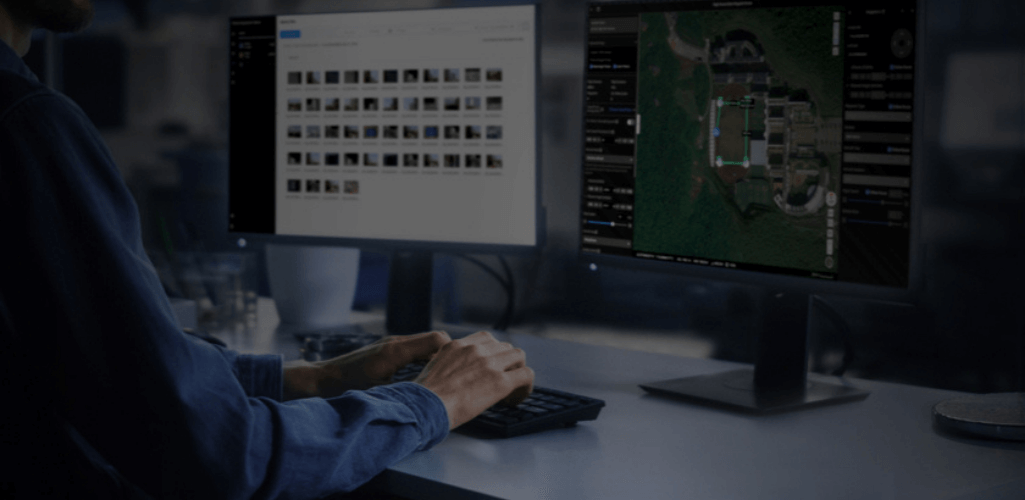
The package is packed with tools to help you plan missions, stream data, and collaborate with your team in real-time.
Key features of this cloud-based software include:
2.5D Base Map
This tool overlays elevation data over the satellite map of your area, so you can have a more 3-dimensional sense of the immediate environment.
Cloud Mapping
A great tool to generate spatially and temporally accurate orthomosaics.
Drag a box across the area you want to create a map or model of, and FlightHub 2 takes care of the rest.
Your final Cloud Map is then overlaid on your 2.5D Base Map, giving you and your team highly accurate spatial information, captured just minutes before.
Live Annotations
Team members can drop pins or draw lines, boxes, and shapes to coordinate operations and designate points or areas of interest.
These Live Annotations can be overlaid onto shared 2.5D Base Maps and Cloud Maps to enhance collaboration between mission commanders, drone pilots, and ground teams.
FlightHub 2 is a powerful software platform which will further empower enterprise drone missions.
FlightHub 2 has a free testing period for all users until October 31, 2022.
M30 Series vs M300 RTK vs Mavic 2 Enterprise Advanced: Drone In A Box
One of the most exciting aspects of the M30 Series launch was the announcement of the DJI Dock: A drone in a box solution.

It offers an innovative solution to facilitate remote flights, providing autonomous takeoff, landing and charging.
The Dock is rated at IP55 and the core internal components are IP67, making it waterproof and dustproof even when it is open.
It is engineered for a dedicated M30 Dock Version drone, meaning no other drones are compatible. Whether this will change in the future remains to be seen.
But if a drone in a box solution is for you, then the M30 (Dock Version) is an exciting piece of innovation.
The DJI Dock is expected to be available in Q4 2022.
M30 Series vs M300 RTK vs Mavic 2 Enterprise Advanced: Price
Each of these drones come with a different level of investment.
As of the time of writing (March 24, 2022), the Mavic 2 Enterprise Advanced is priced at just over the £5,000 mark.
In comparison, the M30 is pushing £8,000, while the M30T is just over £11,000.
The M300 RTK is the most expensive, with the base unit coming in at around the £10,000 mark. The payloads then need to be purchased on top of this, which can make the M300 RTK a more significant investment, albeit counter-balanced by its amazing tech specs and versatility.
M30 Series vs M300 RTK vs Mavic 2 Enterprise Advanced: Summary
Innovation is at the very heart of DJI Enterprise solutions, which have changed the world of work.
DJI's Enterprise's line-up was already extremely strong, before the M30 Series was unveiled on March 21, 2022.
Now this latest drone has upped the level once again.
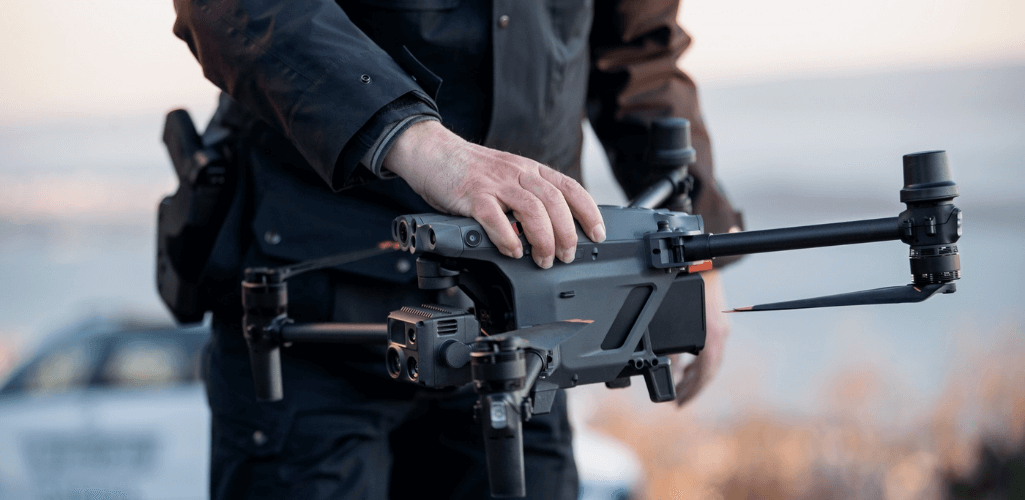
A hybrid of the popular and powerful M300 RTK and Mavic 2 Enterprise Advanced, the M30 Series is an impressive platform, offering superb performance in an extremely rugged and portable frame.
Taking the best bits of the M300 RTK and Mavic 2 Enterprise Advanced and putting them together in one airframe, the M30 combines endurance, enhanced weatherproofing, incredible camera specs, advanced safety features and slimline design to be a truly exciting prospect and an extremely strong and innovative all-rounder - especially for public safety and inspection.
But what does it mean for DJI's other enterprise platforms, namely the M300 RTK and Mavic 2 Enterprise Advanced?
The M300 RTK should still be considered as a key part of a commercial drone programme - thanks to its capabilities and vast array of quality payloads and configurations.

In fact, the M30 and M300 RTK both have their place in a drone fleet: The M30 deployed as a rapid solution, while the M300 RTK brings its versatility to the table, especially as a high-precision surveying or inspection option.
After all, the M30 is tailor-made for the emergency services - for instance - but the M300 RTK's LiDAR and photogrammetry capabilities ensure public safety crews can conduct key missions such as crime-scene mapping.
And what of the Mavic 2 Enterprise Advanced? Does the M30's arrival make it redundant? No, not necessarily. After all, the Advanced is still a powerful aerial tool which is a more cost-effective and portable platform than the M30 and M300 RTK, which will tick numerous boxes for some operators.
In fact, the M30 should be seen as a drone fleet scaler, offering an exciting addition to a drone fleet, rather than replacing existing aircraft. The M30, M300 RTK and Mavic 2 Enterprise Advanced provide a suite of top-class enterprise drones, each with their own capabilities and mission-specific roles within expanding drone programmes.
It is an exciting time to be a commercial drone pilot, and the M30 and the drone in a box concept brings a new frontier to the industry.
